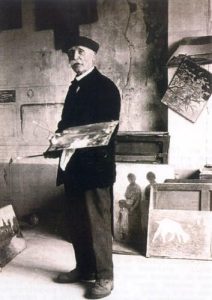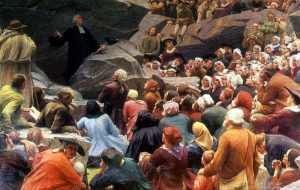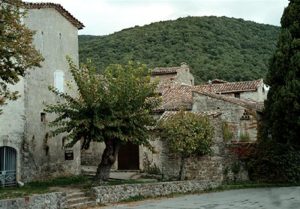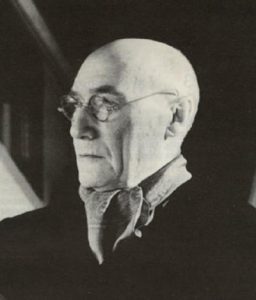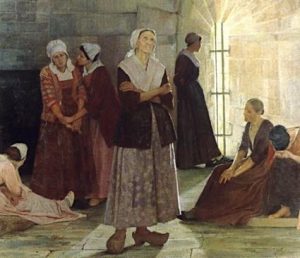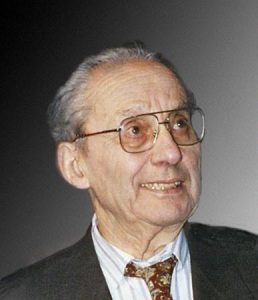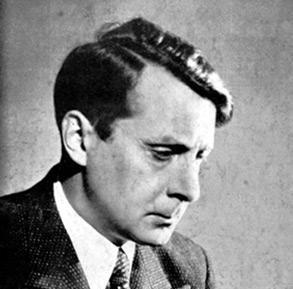Training at the School of Fine Arts in Paris and his time in Paris
He was born in Montpellier in 1853 in a bank managers’ family, but his artistic call was expressed soon and he went to the School of Fine Arts in Montpellier. He then came to the Paris school in 1921.
Having no financial problems, he had a studio near Montparnasse, exhibited his work every year at the Salon des Artistes français (prize-winner, then unrivalled, and later a member of the jury).
Finally settling down with his family in Montpellier
His wife died while giving birth to their second son, so he decided to go back to his family in Montpellier. He kept exhibiting his work in Paris regularly until he died in 1941.
This tragic event in his family was a turning point in his art. His paintings were heavily influenced by religion, two of his most characteristic pieces were Women prisoners at the Tour de Constance in Aigues Mortes, Heroes of the Freedom of Thought at the Musée du Désert (Desert Museum).
At the time he also represented large historical and mythological scenes, such as Reception of President Sadi Carnot at Montpellier university, and painted many family portraits.
He did some more spontaneous small paintings of vineyards and Mediterranean landscapes at different times of the day, which were markedly under impressionist influence.
An exhibition of the late Max Leenhardt’s work at the museum of Montpellier in 1997 was a great success.

